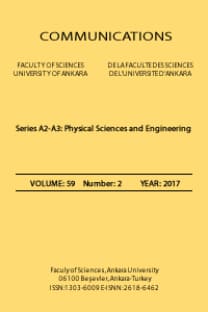ANALYZING THE PERFORMANCE OF PURE LATERATION IN INDOOR ENVIRONMENTS WITH VARIOUS PERFORMANCE METRICS
Pure lateration, Indoor Positioning, Triangulation, GPS
___
Koyuncu, H., Yang, S., A Survey of Indoor Positioning and Object Locating Systems, IJCSNS International Journal of Computer Science and Network Security, 10(5) (2010), 121-128.Gezici, S., A survey on wireless position estimation, Wireless Personal Communications, vol. 44, pp. 263-282, 2008.
Sakpere, W., Adeyeye, O., Mlitwa, N., A State-of-the-Art Survey of Indoor Positioning and Navigation Systems and Technologies, South African Computer Journal, 2(3) (2017), 145–197.
Yassin, A. et al., Recent Advances in Indoor Localization: A Survey on Theoretical Approaches and Applications, IEEE Communications Surveys & Tutorials, 19(2) (2017), 1327-1346.
Zhang, D. et al., Localization Technologies for Indoor Human Tracking, Proc. of 5th International Conference on Future Information Technology, (2010).
Mounir, T. et al., Positioning system for emergency situation based on RSSI measurements for WSN, Proc. of International Conference on Performance Evaluation and Modeling in Wired and Wireless Networks (PEMWN), (2017).
Lee, Y., Weighted-average based aoa parameter estimations for LR-UWB wireless positioning system, IEICE Transactions on Communications, 94 (2011), 3599-3602.
Alsindi, N., Alavi, B., Pahlavan, K., Spatial characteristics of UWB TOA based ranging in indoor multipath environments, Proc. of 18th IEEE international symposium on personal, indoor and mobile radio communications, pp. 1-6, Athens, Greece, 2007.
Alsindi, N.A., Alavi, B., Pahlavan, K., Measurement and modeling of ultrawideband TOA-based ranging in indoor multipath environments, IEEE Transactions on Vehicular Technology, 58 (2009), 1046-1058.
Reddy, N., Sujatha, B., TDOA computation using multicarrier modulation for sensor networks, International Journal of Computer Science Communication Network, 1 (2011), 85-90.
Obeidat, H. et al., Indoor localization using received signal strength, Proc. of 8th IEEE Design and Test Symposium, 2013.
Youssef, M. Agrawala, A., Shankar, A.U., WLAN location determination via clustering and probability distributions, Proc. of IEEE International Conference on Pervasive Computer Communications (PerCom), (2003), 143-150.
Bahl, P., Padmanabhan, V.N., RADAR: an in-building RF-based user location and tracking system, Proc of IEEE Infocom, Tel Aviv Israel, (2000), 775-784.
- ISSN: 1303-6009
- Yayın Aralığı: Yılda 2 Sayı
- Başlangıç: 2019
- Yayıncı: Ankara Üniversitesi
TOWARDS REAL TIME IMAGE DEHAZING ON ANDROID OPERATING SYSTEM
ANALYZING THE PERFORMANCE OF PURE LATERATION IN INDOOR ENVIRONMENTS WITH VARIOUS PERFORMANCE METRICS
MODERN LEARNING TECHNIQUES AND PLANT IMAGE CLASSIFICATION
Metehan ÜNAL, Erkan BOSTANCİ, Mehmet Serdar GUZEL, Ayhan AYDIN
A CONCATENATED UP AND DOWN TAPERED FIBER FOR SIMULTANEOUS MEASUREMENT OF STRAIN AND TEMPERATURE
A STATISTICAL OVERVIEW ON SLEEP SCORING
Levent ÖZBEK, Levent SÜTÇÜGİL, Hamdullah AYDIN, Sinan YETKİN, Fuat ÖZGEN
